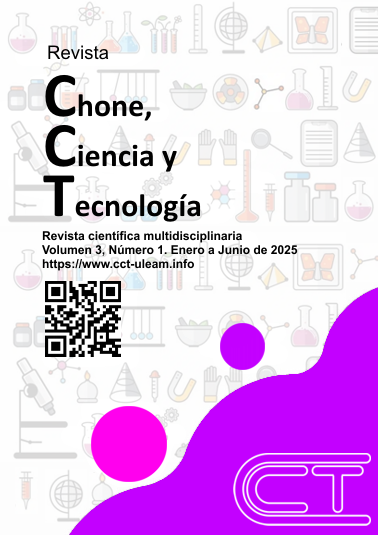Motivation in learning oral communication in english.
DOI:
https://doi.org/10.56124/cct.v3i1.001Keywords:
Communication; motivation; English.Abstract
The present study focused on motivation in elementary school students at the Aurelio Salazar School to learn oral communication in English. Its main objective was to design a didactic strategy to improve students' motivation. A mixed methodology combining quantitative and qualitative approaches was used. Interviews were conducted with teachers to learn about the dynamics of the process and the strategies used by teachers, and observation sheets, were to learn about both oral performance and classroom behavior on the part of students; the results showed that 62% of the students did not achieve the minimum passing grade, which led to the design of a didactic strategy consisting of a set of complementary actions to address the insufficiencies of motivation found in the groups of students in the groups studied. For the actions, the student's needs and motivations related to everyday life were taken into consideration; these actions are interconnected and reinforce each other for a more effective impact. The strategy was positively valued by teachers through a socialization workshop, where they expressed their support for the design and its future implementation.
Downloads
References
Abdullah, S., Altun, M., & Hama, F. M. (2022). The Effect of Language Learning Anxiety on English Oral Performance. International Journal of Social Sciences and Educational Studies, 341.
Cardenas, G. (2021). El juego de roles como técnica para desarrollar la expresión oral en inglés como lengua extranjera. . Revista arbitrada del Centro de Investigación y Estudios Gerenciales, 12.
Cherie, F. F., & Alex, D. R. (2022). Participación activa en clases. Factores que intervienen en la interacción de los estudiantes en clases online sincrónicas. Revistas científicas de Filo-Información, Cultura y Sociedad, 129.
Gerson Andrés, Barón Ayala. (2023). Relación entre la motivación y la ansiedad durante el aprendizaje de la lengua inglesa en estudiantes del Colegio Integrado de Puerto Wilches. Universidad Autónoma de Bucaramanga.
Hernández, D. R., & Rosell, Y. M. (2022). Los juegos tradicionales y la motivación por el aprendizaje del idioma inglés. Revista científica Sociedad & Tecnología, 567.
Herrera, K. D. (2021). La expresión oral en lengua extranjera inglés. Universidad Externado de Colombia.
Jara, R. M., & Pérez, R. C. (2023). Relación entre motivación y rendimiento académico de estudiantes en el idioma inglés. (U. d. Serena, Ed.) Logos: Revista de Lingüística, Filosofía y Literatura, 33, 490-509. Retrieved Octubre 28, 2024
Lai. (2011). Motivation: A Literature Review. Pearson.
Loja, M., Pinos, K., Quito, M., & Castillo, M. (2023). Aprendizaje Basado en Juegos para la Motivación en las Clases Lengua y Literatura. Ciencia Latina Revista Científica Multidisciplinar, 467.
Maxmudjon, M. A., & Komiljonova, M. A. (2024). CONTENT AND LANGUAGE INTEGRATED LEARNING (CLIL) METHOD AND HOW IT IS CHANGING THE FOREIGN LANGUAGE LEARNING LANDSCAPE. O'ZBEKISTONDA FANLARARO INNOVATSIYALAR VA ILMIY TADQIQOTLAR JURNALI, 28.
Núñez, C. E., & Villarreal, M. d. (2022). Motivación hacia la lectura en inglés como lengua extranjera en estudiantes de educación media generaln. REVISTA CIENCIA E INTERCULTURALIDAD, 43-50.
Sebastián Bernal Rodríguez, A. R. (2020). Optimización del aprendizaje del inglés en niños de primaria con el uso de Duolingo. Boletín Redipe.
Supervía, P. U., & Bordás, C. S. (2018). School motivation, emotional intelligence and academic performance in students of secondary education. redalyc.org, 96.
VALDES, K. N. (2022). Influencia de la música en la enseñanza del inglés en el segundo año de educación secundaria en la Institución Educativa José Antonio Encinas, del distrito Gregorio Albarracín Lanchipa. Repositorio – UJCM - Universidad José Carlos Mariátegui.
Zanyar, N. (2023). The Influence of Self-Confidence on English Language Learning: a Systematic Review. International Journal of Applied Educational Research (IJAER), 55.
Additional Files
Published
Issue
Section
Categories
License
Copyright (c) 2025 Evelyn Velez, Raisa Macias Sera

This work is licensed under a Creative Commons Attribution-NonCommercial-NoDerivatives 3.0 Unported License.
Protección intelectual y licencia. La Revista y cada uno de los artículos y ensayos que se publican están licenciados por Creative Commons 3.0 Ecuador (CC), que establece: "Atribución - No Comercial - Sin Derivadas", lo cual indica que:
- Compartir: el material puede ser distribuido, copiado y exhibido por terceros siempre que se le atribuya el crédito al autor/a.
- Atribución: El autor debe dar crédito de manera adecuada, brindar un enlace a la licencia, e indicar si se han realizado cambios. Puede hacerlo en cualquier forma razonable, pero no de forma tal que sugiera que usted o su uso tienen el apoyo de la licenciante.
- No comercial: No se puede hacer uso del material con propósitos comerciales.
- SinDerivadas — Si remezcla, transforma o crea a partir del material, no podrá distribuir el material modificado.
No hay restricciones adicionales — No puede aplicar términos legales ni medidas tecnológicas que restrinjan legalmente a otras a hacer cualquier uso permitido por la licencia.
Lectores (as). La Revista permite la posibilidad de que los lectores o lectoras puedan, de forma gratuita, descargar, almacenar, copiar y distribuir la versión final aprobada y publicada (post print) del artículo, siempre y cuando se realice sin fines comerciales, no se generen obras derivadas y se mencione la fuente y autoría de la obra.
Autores (as). La Revista permite la publicación del post-print en repositorios y sitios web. La Revista coloca a disponibilidad los artículos, en repositorios de terceros, inmediatamente después de su publicación.







